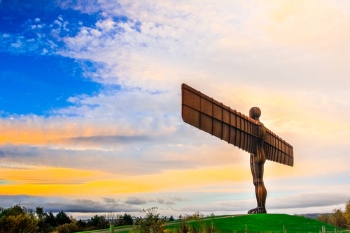
The income gap between the North and the South has remained consistently wide since the early 2000s despite all the talk of levelling-up, think tank says.
An analysis by the Northern Powerhouse Partnership found that in 2021 the median full time salary for people living in London was £37,500 – £8,404 higher than in the Northern Powerhouse (£29,096).
Drawing on figures from the Office for National Statistics (ONS), the think tank also found that when compared with the wider South East the income gap was £4,887.
The income gap with London has been relatively consistent since 2002 with residents in the capital earning around a third more than their counterparts in the North on average, according to the Northern Powerhouse Partnership. It narrowed slightly in 2021 but that could have been the result of COVID.
The region with the lowest median earnings across all of the UK was the North East at £27,646 in 2021, the research revealed. London was the highest at £37,500.
Henri Murison, chief executive of the Northern Powerhouse Partnership, said that the leadership election is ‘turning levelling up from too much rhetoric and not enough delivery to being without any meaning at all.’
He continued: ‘One candidate who keeps claiming she didn’t want to pay northerners less even though she plainly did. The other who has now claimed a Green Book reform package to level the playing field between North with London and the South East was about taking money from deprived inner cities in places like Liverpool or Leeds. The former Chancellor trashing his own not considerable legacy having taken on board the advice of leading economists including my senior colleague Lord Jim O’Neill to do so.
‘It will take decades of consistent effort following the initial commitments of George Osborne to close the huge earnings gap between northerners and those in London. What is becoming clear is that only Rachel Reeves and the Shadow Treasury team are at the moment prepared to be serious about this agenda, and that could cost the current government when those in the so-called Red Wall compare and contrast where the parties stand on the North.’












